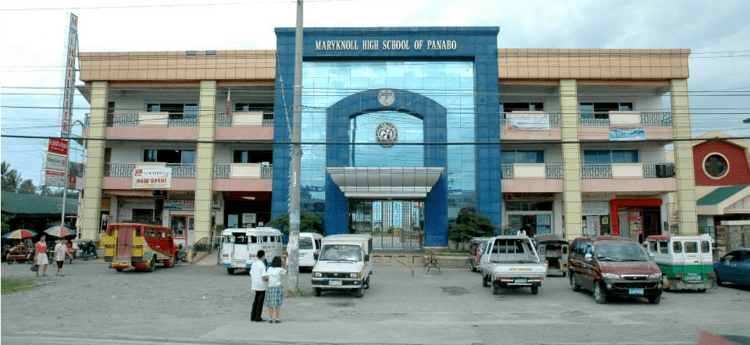Country Philippines Region Davao Founded July 19, 1949 | Area 251.23 km2 Mayor James Gamao .(Liberal) | |
 | ||
District 2nd District of Davao del Norte | ||
Map of Panabo
Panabo is a 3rd class city in the province of Davao del Norte, Philippines. According to the 2015 census, it has a population of 184,599 people.
Contents
- Map of Panabo
- Slain pnpsaf now in panabo city
- Panabo city tricycle tour
- Government
- Barangays
- History
- Legal Basis
- Economy
- Infrastructure
- Education
- Sister Cities
- References

Bordering Davao City to its northeast, Panabo is a part of Davao Metropolitan Area. The city has an area of 25,123 hectares (62,080 acres).
Slain pnpsaf now in panabo city
Panabo city tricycle tour
Government
The Panabo City Hall is located about 2.23 kilometers from its boundary with Davao City.
Barangays
The city is politically subdivided into 40 barangays. Quezon was formerly the sitio of Cabili; it became a barrio in 1957.
History
Originally the rich lowland was inhabited by a group of stocky-haired natives called Aetas. These people led nomadic life and lived by hunting. With the use of their most essential tool, the bow and arrow—"pana-sa-boboy" as they call it—they hunted for food which primarily consisted of rootcrops and meat of wild boars.
When the Christian settlers came at the beginning of the 20th century, the place was already a thriving trading community; thus, the place was already known as Taboan, which means "trading center". After the Cristian settlers began pioneering the region, the natives moved further to the hinterlands along with them their "pana-sa-boboy". This term later evolved into present day name Panabo.
Legal Basis
Panabo, which was formerly a mere barangay of Tagum, then known as Magugpo during that time, became a town July 19, 1949, through Presidential Proclamation No. 236 of the President Manuel A. Roxas.
The local government unit of Panabo was created into a component city of Davao del Norte by virtue of Republic Act No. 9015 and ratified by the residents in a plebiscite held on March 31, 2001. However, its official existence as a municipal corporation took effect on with the appointment of new set of officials.
Economy
Being an agro-industrial city, Panabo is known as the "Banana Capital of the Philippines" due to numerous banana plantations scattered throughout the city. In fact, Panabo is the home of the world’s biggest banana plantation, which is owned by the Tagum Agricultural Development Company (TADECO), which covers around 6,900 hectares of banana fields and produce millions of boxes of export-quality bananas annually. The city itself cultivated 40% of its land or around 10,000 hectares into planting export-quality Cavendish bananas. Thus, banana cultivation and exportation are the main economic lifeblood of the city.
Infrastructure
There are also two privately owned port facilities in the city, which enabled them to export various fruits, such as bananas, mangoes, papayas, and pineapples, to countries like Japan, Korea, China, and countries as far in the Middle East and the European Union.
Public infrastructure includes the Freedom Park which features a unique banana inspired fountain sculpted by the world class artist Kublai Millan. The Panabo Multi-Purpose Cooperative Tourism Gymnasium, located beside the City Hall is also a public infrastructure, the gymnasium accommodates an estimated ten-thousand people and also serves as playing venue of the Philippine Basketball Association as well as serving concerts for the city.
Education
Universities:
Colleges:
High-schools:
A memorandum of agreement between UP Los Baños College of Agriculture and ANFLOCOR was signed for the establishment of UP Professional School for Agriculture and the Environment (UP PSAE) which will be UPLB's extension campus in Panabo City. In addition, UP Mindanao will also collaborate on some courses and programs to be offered.
